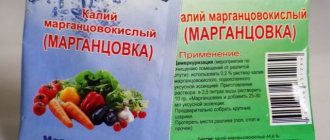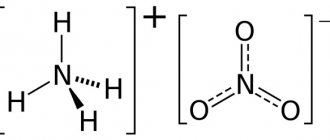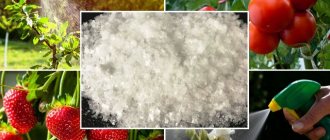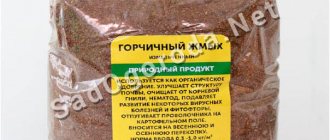Superphosphate is a popular fertilizer that is suitable for tomatoes, cucumbers, potatoes, strawberries, fruit trees and shrubs, many different flowers, as well as for the lawn. In this publication we will talk about how to use superphosphate.
Superphosphate is the most well-known phosphorus-containing fertilizer, most often obtained from phosphate rocks treated with sulfuric acid. The role of phosphorus in gardening and horticulture is difficult to overestimate. Indeed, when it is deficient, the leaves and stems of plants acquire bluish, crimson or purple shades, as well as necrotic spots. Then, as a result of poor development of the root system, the plant stops growing, and its leaves become deformed and fall off.
- What are phosphate fertilizers - types, names, application features
Everything you wanted to know about applying phosphorus fertilizers in the garden, vegetable garden and flower garden.
With a sufficient amount of phosphorus, green pets are better able to resist fungal diseases, use water more economically, bloom more profusely and accumulate sugar in fruits, as a result of which their taste characteristics improve. Most often, superphosphate is used after harvesting. Applying this fertilizer in the fall helps plants better withstand frost. As a result, in the next season they will delight you with flowering and set fruit earlier.
Types and composition of superphosphate
Superphosphate is one of the most popular fertilizers applied in the fall. Unlike most complex fertilizers, superphosphate contains little nitrogen, which means it does not stimulate the growth of green mass. Like all phosphorus fertilizers, it must be incorporated into the soil (it is advisable to normalize acidic soils a month before applying superphosphate using lime, chalk, dolomite flour or ash).
- Soil acidity: determine and regulate
If your soil is highly acidic, this can seriously harm your plants. How do you know when it's time to take action?
Some gardeners prefer to prepare an extract from superphosphate, but this can be difficult, since some fertilizer elements are poorly soluble in water.
It is not advisable to apply superphosphate to the soil simultaneously with urea, lime, dolomite flour and ammonium nitrate. After using these fertilizers, you can feed the plants with superphosphate no earlier than a week later.
The color of superphosphate is pink, white, but more often gray
The phosphorus content ranges from 20 to 50%. As a rule, this element is included in the fertilizer in the form of free phosphoric acid or monocalcium phosphate. Superphosphate may also contain elements such as nitrogen, sulfur, boron, molybdenum and calcium sulfate (gypsum).
Superphosphate is available in various forms, each of which has its own characteristics and advantages.
Simple superphosphate , or monophosphate , is a gray powder containing up to 20% phosphorus, as well as nitrogen, sulfur and calcium sulfate in the form of gypsum.
To prevent simple superphosphate from caking during storage, the air humidity in the room should be no higher than 50%.
Nowadays, there are more effective and improved forms of fertilizers, but simple superphosphate is still popular primarily due to its low price.
Double superphosphate contains up to 50% phosphorus, as well as about 6% sulfur and 2% nitrogen. This fertilizer can be used on different types of soil. Double superphosphate is applied in the fall and spring in advance - before planting, while focusing on weather conditions so that the beneficial elements have time to dissolve in the soil. Fertilizer reduces the period of fruit ripening, promotes the accumulation of protein by plants, and fat by oilseeds.
Granular superphosphate contains up to 50% phosphorus, as well as about 30% calcium sulfate and is especially popular with plants of the Cruciferous family. Gardeners and vegetable gardeners value fertilizer for its ease of storage (the granules do not cake) and application. At the same time, granular superphosphate is less well fixed in the soil.
Ammoniated superphosphate contains 32% phosphorus, as well as nitrogen, calcium and potassium sulfate. Due to the presence of sulfur, this type of superphosphate is especially valued when growing cruciferous and oilseed crops. The efficiency of the combined fertilizer is especially high. But there is another undoubted advantage: ammoniated superphosphate does not oxidize the soil due to the presence of ammonia in its composition, which neutralizes the chemical reaction.
Methods of using phosphorus fertilizer
Regular and granular superphosphates are used to feed plants as follows:
:
- the dry preparation is scattered over the surface of the soil, then it is embedded in the soil when digging. If the preparation is not sealed, it can be washed out along with watering or during the rainy season. Apply dry superphosphate when preparing beds in the spring, as well as in the trunk circles of fruit trees and shrubs, as well as in flower beds in the spring before planting annual flowers;
- Water seedlings of vegetable crops, flowers, as well as indoor plants with diluted superphosphate;
- a solution of this drug is applied during the summer under vegetable and garden crops, if necessary - under fruit trees and bushes, under flowers in flower beds. You can also fertilize indoor flowers with this solution;
- the drug must also be added to compost pits;
- when planting plants in a permanent place, they can be added to planting holes;
- use an aqueous solution of superphosphate for foliar feeding if plants have an acute phosphorus deficiency. This fertilizing allows you to quickly “deliver” phosphorus to all parts of garden crops.
Why are phosphate fertilizers needed - video
Top dressing with superphosphate
Superphosphate as a fertilizer is suitable for many crops, including fruit trees, berry bushes, vegetables, a variety of flowers and even lawns.
Many gardeners and gardeners wonder how much superphosphate is in a tablespoon. If we talk about granular superphosphate, then about 15-17 g, and if we talk about simple superphosphate, produced in powder form, then 18 g.
When preparing a site for sowing plants, simple superphosphate is applied in spring or autumn during digging, on average consuming about 40-50 g of fertilizer per 1 sq.m. Double superphosphate is added at the rate of 20-30 g per 1 sq.m.
- Autumn fertilizers - how to feed the garden, vegetable garden and flower garden at the end of the season
We'll tell you how to enrich the soil so that green pets will continue to delight you next year.
Sometimes fertilizing is combined with the application of potassium and nitrogen fertilizers. Quite often, simple superphosphate is used to enrich compost with useful substances (100 g of fertilizer per 100 kg of plant mass).
When to apply in autumn or spring
Most often, superphosphate is used to fertilize the soil in the fall after harvesting so that the plants can withstand frost well. Then next season they will bloom faster and set fruit.
Experienced gardeners recommend adding superphosphate in the fall, then it acts in the soil for a long time, feeding it with the necessary components.
Important! This method is suitable for neutral and alkaline soils. Acidic soil can be fertilized in the fall if liming is not carried out.
In the spring it is better to apply phosphorus-containing fertilizer into the holes, and in the summer to water it with a solution. The powder can be added to compost. This fertilizer will help nourish the plants with minerals for the whole season.
Watch the video! Superphosphate Review
Superphosphate for strawberries
For autumn feeding of strawberries, 10 g of superphosphate is diluted in 10 liters of water. Fertilizer can only be applied between rows.
Since superphosphate interacts well with organic matter, you can also use a mixture of diluted mullein (1 liter per 10 liters of water) with the addition of superphosphate (2 tbsp) and wood ash (1 cup).
- How to feed strawberries in the fall
Timely autumn feeding of strawberries (garden strawberries) is the key to a good harvest in the coming season. We talk about which fertilizers to choose, organic or mineral, and how to apply them correctly in today’s material.
Superphosphate for roses
Roses require balanced autumn feeding, so it is advisable to use superphosphate in combination with other fertilizers. For root feeding, 16 g of potassium monophosphate and 15 g of superphosphate can be diluted in 10 liters of water. The composition is enough to feed plants located on an area of 4-5 sq.m.
You can also use a solution of superphosphate (25 g), potassium sulfate (10 g) and boric acid (2.5 g) per 10 liters of water to feed rose bushes. It is important to measure the amount of fertilizer especially carefully, since excess boric acid can be extremely harmful to plants.
- How to feed roses in the fall
We will tell you which fertilizers are best suited for autumn feeding of roses.
For foliar feeding of roses, 50 g of superphosphate is dissolved in 1 liter of hot water, then another 10 liters of water are added and the leaves are sprayed. This way, plants quickly receive the necessary nutrients, but the composition of the soil does not change, which is a definite plus.
For spraying, you can also use potassium monophosphate (5 g) and superphosphate (5 g), dissolved in 10 liters of water
How to determine phosphorus deficiency in plants
It is very simple to determine the lack of phosphorus in plants: the foliage and stems immediately change their color - they become bluish, crimson or purple. Necrotic spots may also appear on the above-ground parts of plants. Purple spots may appear on the reverse side of the foliage. The core of root vegetables begins to darken.
Photos of signs of phosphorus deficiency on plant leaves
If the root system does not have enough phosphorus, the plant begins to weaken, wither, and as a result may die.
Superphosphate for cucumbers
Before planting cucumbers in a greenhouse in spring, it is necessary to prepare the soil. To do this, you can dig it up about two weeks before planting the seedlings, and then add 20-30 g of urea, and a week later 20 g of potassium sulfate and 20-30 g of superphosphate.
- How to feed cucumbers in a greenhouse for good growth
How to feed cucumbers in a greenhouse at different stages of their growth?
At the beginning of flowering, in order to provide cucumbers with a sufficient amount of phosphorus, they spray with superphosphate (35 g) diluted in 10 liters of water. In this case, the superphosphate extract is prepared about a day before use, so that the fertilizer has time to dissolve as much as possible in hot water. Before using the infusion, it is carefully drained to separate the settled sediment.
- Foliar feeding of cucumbers - the best recipes
We tell you in detail what and how to feed cucumbers by leaves in a greenhouse and open ground.
To prevent cucumber leaves from turning yellow, experienced gardeners recommend using ready-made complete fertilizers or a urea solution (30 g per 10 liters of water). It is important to water the soil around the plants, avoiding getting the mixture directly on your green pets, as it can cause burns.
- Why do cucumber leaves turn yellow and dry and what can I do about it?
What to do if cucumber leaves turn yellow and wither?
If you grow cucumbers on the balcony, it is recommended to feed them two weeks after emergence, alternating a mixture of 15 g of potassium fertilizers, 3 g of superphosphate and 5 g of magnesium sulfate, dissolved in 10 liters of water and a separately applied solution of any nitrogen fertilizer. When watering plants, it is important that fertilizer does not fall on young leaves.
Mineral fertilizers can be replaced with organic matter. To do this, you need to dissolve 1 liter of mullein and 2 cups of ash in 10 liters of water.
Precautionary measures
Gardeners should not forget that open chemical compounds have an adverse effect on the human body. Therefore, all manipulations with fertilizers should be performed with special gloves, tucking your hair under a hat and wearing a respirator (or gauze bandage).
It is better to prepare liquid fertilizers outside. The room where the superphosphate extract is infused must have good ventilation.
Phosphorus is necessary for garden plants for harmonious development. Proper use of superphosphates allows you to achieve abundant flowering of crops, resist fungal diseases, increase frost resistance, and improve the taste of the crop. The use of fertilizers not only optimizes the growth of vegetables, fruits and berries, but also allows you to properly care for the soil and maintain its fertility.
Superphosphate for tomatoes
You can feed tomatoes with superphosphate already at the seedling growth stage. After all, sometimes young plants do not have enough phosphorus, as evidenced by the leaves curling inward. To correct the situation, you can spray the plants with a superphosphate extract. In order to prepare it, 20 tbsp. granules, pour 3 liters of boiling water and leave for a day in a warm place, stirring every now and then. Then 150 ml of infusion is diluted with 10 liters of water and 20 ml of any nitrogen fertilizer is added, which will contribute to better absorption of phosphorus.
- How to feed tomato seedlings on the windowsill?
Useful tips on how to improve the growth of tomato seedlings and provide the plants with missing nutrients.
When planting seedlings in open ground, you can add 1 tsp to each hole. superphosphate, as well as some compost and wood ash. It is important that the fertilizer does not come into contact with the delicate roots of the plants.
- How to feed tomatoes that grow poorly
Have you noticed that your tomatoes have stopped growing? Perhaps they lack minerals and additional nutrition.
During flowering, for more active fruit set, experienced gardeners feed tomatoes with superphosphate (1 tsp per 10 water).
As an alternative, you can use a mixture of 0.5 liters of chicken manure, 1 tbsp. superphosphate and 1 tsp. potassium sulfate per 10 liters of water
If you prefer foliar feeding, during flowering you can spray the plants with a 0.5% superphosphate extract (50 g of superphosphate per 10 liters of hot water). After the solution has infused, process the tomatoes, using about 10 ml of the resulting mixture for each bush.
- How to feed tomatoes in open ground for rapid fruit growth
Comprehensive information on when, what and in what doses to feed tomatoes grown in unprotected soil.
In order to speed up the ripening of fruits, you can use an infusion of superphosphate. 1 tbsp. Fertilizers are poured into a glass of water and left for 48 hours. Next, dilute 10 liters of water and spray the tomato leaves.
Also, during the process of growth and development, you can feed tomatoes with fertilizer, which combines mineral and organic elements. To do this, dissolve 2 tbsp. superphosphate in 10 liters of water and let it brew for 24 hours, then add 0.5 liters of chicken manure and 1 tbsp. potassium sulfate. About 1 liter of the composition can be applied to each bush.
A drip irrigation system can be used to apply liquid fertilizers.
If you grow tomatoes in a greenhouse, during the fruiting period, when the plants expend maximum energy, you can feed them with a solution of superphosphate (2 tbsp) and liquid potassium humate (1 tbsp per 10 liters of water).
- How to feed tomatoes in a greenhouse for a good harvest
Secrets of proper fertilization for tomatoes grown in a greenhouse.
Let's sum it up
Considering the rich mineral composition of superphosphate, we can draw an unambiguous conclusion - complex fertilizing is necessary for all garden crops, regardless of soil type.
Today, agriculture cannot be imagined without the use of special fertilizers. Growing plants in one place for a long time depletes the soil, making it less nutritious and weak. The use of special complexes will help replenish the reserves of macro- and microelements.
Superphosphate has a long period of action, is not washed out of the soil, and has the best effect on the growth and development of plants. The versatility of use and affordable price make the fertilizer the most popular on the market.
Read more about the use of superphosphate in the following video:











